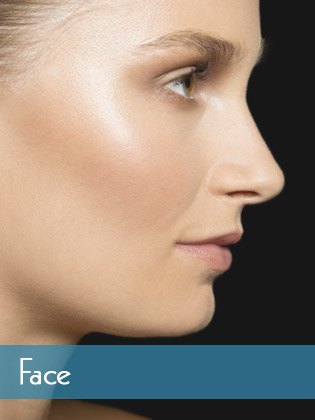
- HOURS
HOURS: Monday - Friday: 9:00 a.m. - 5:00 p.m. Please call for an appointment. - PHONE
PHONE: Our main number is(212) 472-9653. - LOCATION
Map & Directions

Joseph A. Wolf, M.D., is a leading aesthetic and reconstructive plastic surgeon with a private practice on New York City’s Upper East Side. Board-certified in plastic surgery, Dr. Wolf pairs state-of-the-art technique with a disciplined aesthetic inspired by his profound respect for the body’s own design and function. His thoughtfully conservative approach ensures impeccable results that are tailored to each patient’s body type, lifestyle, personality and tastes. While Dr. Wolf specializes in breast and facial surgery, he is fully trained, skilled and experienced in procedures of all areas of the body. (For more on specific surgeries, see Procedures.)
A native of Long Island, New York, Dr. Wolf graduated from the Albert Einstein College of Medicine. He completed extensive residency and fellowship training at the Albany Medical Center, Department of Plastic and Reconstructive Surgery. He is affiliated with Lenox Hill, Beth Israel and Mr. Sinai Hospitals in Manhattan. Dr. Wolf also performs select procedures in the office of the Center for Specialty Care on Manhattan’s Upper East Side.
In addition to his private practice and his commitment to the emergency room, Dr. Wolf is dedicated to bettering lives of adults and children near and abroad as a medical board advisor for Little Baby Face Foundation in New York; he performs corrective surgery for children from around the world born with facial deformities. He is also Chief Medical Director for the Dror for the Wounded Foundation, providing reconstruction-surgery services to severely wounded Israeli Defense Force (IDF) soldiers. He has traveled with Smile Train to repair cleft lips and palates in children and adults worldwide.

Why is Dr. Wolf committed to a conservative approach?
Dr. Wolf focuses on—and helps his patients embrace—their particular beauty, their most distinctive and expressive features; he then applies his conservative aesthetic and a less-is-more approach to recommending a surgical plan based on what’s most sensible for each patient and will produce natural, believable results. Dr. Wolf rejects the idea of extreme makeovers and the entrenched industry tactic that preys on a woman’s insecurities about her appearance and aging. From initial consult through follow-up care, he helps each patient see and stay focused on the sensible enhancements that accentuate her best attributes.
What does Dr. Wolf mean by the “whole-person perspective”?
Whether breast augmentation, facelift or rhinoplasty is the intended procedure, Dr. Wolf is firmly committed to an approach that takes the whole body, the whole person and her whole life into account. “All of these factors help us determine your best surgical options, and these guide my hand during surgery,” Dr. Wolf says. Physical characteristics such as body type and skin type certainly are major influences, but they are not the only ones. And when it comes to form and function, both are equally important to the dialogue between doctor and patient. How will this surgery fit into your life and/or change it? Have you had children yet, or do you plan to? Are you post-menopausal? Are you just starting out in a career? What is your occupation? Are you an everyday athlete? (“If a woman plays a sport or works out regularly, she is not going to be happy with outsized implants,” Dr. Wolf points out.) All of these questions and their answers are relevant in the process of conceiving a surgical plan.
Why is context important?
“When I talk about having respect for tissues—the skin, muscles, ligaments, etc.—I mean that these are the all-important, non-negotiable context for your surgical change,” Dr. Wolf explains. "Especially if you want a natural, believable look. And all aspects of a surgery must be aligned with this physiological context.” For example: over-stretching the skin can result in problems, as can ignoring the natural movement of a muscle that might cause a breast implant to “jump” when a woman moves in a certain way. A respect for both the dynamism and the limits of the tissues is key. Context has another, more “macro” connotation as well. A very slender patient considering implants once asked Dr. Wolf, “How small can I go?” He appreciates this way of thinking that rejects social convention, saying, “Be bold; dare to go small! Dare to choose what’s just right for you.”
Why is long-term thinking essential?
A surgeon’s work and commitment to his patient continues beyond surgery through post-operative care and follow-up appointments, and well into the future, according to Dr. Wolf. “I try to convey to my patients that the surgery they choose has to work for them not just now, in this moment, but down the road,” he says. While the field of cosmetic surgery offers some wonderful procedures that do offer instant results and immediate gratification, it’s a mistake to set sights only on those. “I often compare a surgical procedure to getting a tattoo, because everyone knows about tattoos,” says Dr. Wolf. “Think about whether you’re really going to want that twenty years from now.” A balanced perspective can provide a patient with both immediate gratification and long-term reward. Safety and a realistic point of view will dictate a sound surgical plan that truly serves the patient’s best interests over time.
What can a patient expect in terms of follow-up care?
Personal attention is one of Dr. Wolf’s top priorities. He has a small, highly trained, and compassionate staff, but greets each patient for the initial consult and stays involved throughout. “My patients know that I stand behind my work and will follow through for them,” he says. “I will come to their home or hotel room after surgery to do follow-up care. I give them my mobile number. I use the latest, most modern surgical techniques, but I prefer a bedside manner that’s rather old-fashioned in the sense that it involves a kind of personal care that today is a luxury but used to be taken for granted.” Out-of-town patients who wish to can arrange private-duty nursing at a nearby Upper East Side luxury hotel, where Dr. Wolf will make daily post-op visits. For all patients, his office will make all necessary arrangements for pre- and post-surgery.
What are the guiding principles behind successful surgery?
When Dr. Wolf meets a prospective patient, he conveys these points because he finds that they engender a clear dialogue that evolves into a successful collaboration:
1. Do research before the initial consultation. Everyone starts with Google—and that’s at least a start. Word of mouth, books, responsible journalism, and scholarly articles can all help. It’s good for a patient to come in knowing, for example, the differences between saline and silicone implants, and something about size.
2. Recognize and accept your body type and skin type. It’s fine to bring in a photo of a celebrity, but be prepared to concentrate on working with who you really are.
3. Think long-term. Be mindful not just of where you are today in your life, but where you are going—if you can anticipate that.
4. Use only a board-certified plastic surgeon. You can look any doctor up on the Web site of the American Board of Medical Specialties.
5. Safety is, in fact, the first, most important principle. “Please don’t travel to a foreign country with the idea of saving money on surgery,” Dr. Wolf says. “The risks are too great. I can’t tell you how many surgeries I’ve corrected for this reason.”
In the ideal scenario, working with an informed, confident patient, Dr. Wolf can properly assess her desires and goals, and explain what surgery realistically can achieve, as well as which techniques will accomplish the goals. Below, click on a heading to learn more about individual procedures Dr. Wolf performs.
- Breast Augmentation
- Breast Cancer Reconstruction
- Breast Reduction
- Autologous Fat Transfer
- Breast Lift
- Male Breast Reduction
Q What is a Breast Augmentation?
Q What should I know?
Q What does surgery involve?
There are three types of incision used for inserting breast implants: the Peri-areola, Inframammary and Axillary incisions. Each has its own perks.
• The Peri-areola Incision is made around the edge of the areola (dark skin around edge of nipple), allowing the scar to heal virtually invisibly. In most cases the incision does not cause loss of sensation to the nipples, as the nerves are inside the breast.
• The Inframammary Incision is about 3cm long and made under the breast, at the fold or crease line, which naturally hides the scar. The area offers immediate access to the breast for precise placement.
• The Axillary Incision is made in the crease lines of the armpit; it is favored by some patients due to its inconspicuous scarring.
Q How long is recovery and when can I resume my normal routine?
Q What is a Breast Reconstruction?
Q What should I know?
Q What does surgery involve?
Q How long is recovery and when can I resume my normal routine?
Q What is Breast Reduction?
Q What should I know?
Q What does surgery involve?
Q How long is recovery and when can I resume my normal routine?
Q What is Autologous Fat Transfer?
Q What should I know?
Q What does surgery involve?
Q How long is recovery and when can I resume my normal routine?
Q What is a Breast Lift?
Q What should I know?
Q What does surgery involve?
Q How long is recovery and when can I resume my normal routine?
Q What is Gynecomastia?
Q What should I know?
Q What does surgery involve?
Q How long is recovery and when can I resume my normal routine?
- Brow Lift
- Cheek Augmentation
- Chin Augmentation
- Eyelid Surgery
- Face Lifts
- Nose Surgery
Q What is an Endoscopic Brow Lift?
Q What should I know?
Q What does surgery involve?
Q How long is recovery and when can I resume my normal routine?
Q What is a Cheek Augmentation?
Q What should I know?
Q What does surgery involve?
Q How long is recovery and when can I resume my normal routine?
Q What is a Chin Augmentation?
Q What should I know?
Q What does surgery involve?
Q How long is recovery and when can I resume my normal routine?
Q What is Eyelid Surgery?
Q What should I know?
Q What does surgery involve?
Q How long is recovery and when can I resume my normal routine?
Q What is a Face Lift?
Q What should I know?
Q What does surgery involve?
Q How long is recovery and when can I resume my normal routine?
Q What are Injectable Fillers?
Q What is Botox?
Q What is Juvederm?
Q What is Nose Surgery?
Q What should I know?
Q What does surgery involve?
Q How long is recovery, and when can I resume my normal routine?
Q What is Botox?
Q What is Juvederm?
- Arm Lift
- Liposuction
- Tummy Tuck
- Post-Gastric Bypass Surgery
Q What is an Arm Lift?
Q What should I know?
Q How long is recovery, and when can I resume my normal routine?
Q What is Liposuction?
Q What should I know?
Q What does surgery involve?
Q How long is recovery, and when can I resume my normal routine?
Q What is a Tummy Tuck?
Q What is a Mini Tummy Tuck?
Q What should I know?
Q What does surgery involve?
Q How long is recovery and when can I resume my normal routine?
Q What is Post-Gastric Bypass Surgery?
Q What should I know?
Q What does surgery involve?
Q How long is recovery and when can I resume my normal routine?








